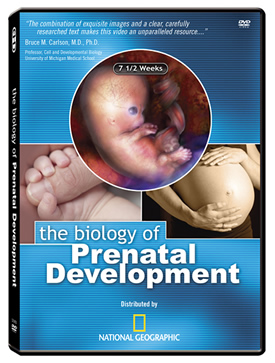Download English PDF Download Spanish PDF Download French PDF What is PDF?
Table of Contents
- THE EMBRYONIC PERIOD (THE FIRST 8 WEEKS)
-
- EMBRYONIC DEVELOPMENT: THE FIRST 4 WEEKS
-
- Chapter 3 – Fertilization
- Chapter 4 – DNA, Cell Division, and Early Pregnancy Factor (EPF)
- Chapter 5 – Early Stages (Morula and Blastocyst) and Stem Cells
- Chapter 6 – 1 to 1 1/2 Weeks: Implantation and Human Chorionic Gonadotropin (hCG)
- Chapter 7 – The Placenta and Umbilical Cord
- Chapter 8 – Nutrition and Protection
- Chapter 9 – 2 to 4 Weeks: Germ Layers and Organ Formation
- Chapter 10 – 3 to 4 Weeks: The Folding of the Embryo
- EMBRYONIC DEVELOPMENT: 4 TO 6 WEEKS
-
- Chapter 11 – 4 Weeks: Amniotic Fluid
- Chapter 12 – The Heart in Action
- Chapter 13 – Brain Growth
- Chapter 14 – Limb Buds and Skin
- Chapter 15 – 5 Weeks: Cerebral Hemispheres
- Chapter 16 – Major Airways
- Chapter 17 – Liver and Kidneys
- Chapter 18 – Yolk Sac and Germ Cells
- Chapter 19 – Hand Plates and Cartilage
- EMBRYONIC DEVELOPMENT: 6 TO 8 WEEKS
-
- Chapter 20 – 6 Weeks: Motion and Sensation
- Chapter 21 – The External Ear and Blood Cell Formation
- Chapter 22 – The Diaphragm and Intestines
- Chapter 23 – Hand Plates and Brainwaves
- Chapter 24 – Nipple Formation
- Chapter 25 – Limb Development
- Chapter 26 – 7 Weeks: Hiccups and Startle Response
- Chapter 27 – The Maturing Heart
- Chapter 28 – Ovaries and Eyes
- Chapter 29 – Fingers and Toes
- THE 8-WEEK EMBRYO
- THE FETAL PERIOD (8 WEEKS THROUGH BIRTH)
-
- Chapter 37 – 9 Weeks: Swallows, Sighs, and Stretches
- Chapter 38 – 10 Weeks: Rolls Eyes and Yawns, Fingernails & Fingerprints
- Chapter 39 – 11 Weeks: Absorbs Glucose and Water
- Chapter 40 – 3 to 4 Months (12 to 16 Weeks): Taste Buds, Jaw Motion, Rooting Reflex, Quickening
- Chapter 41 – 4 to 5 Months (16 to 20 Weeks): Stress Response, Vernix Caseosa, Circadian Rhythms
- Chapter 42 – 5 to 6 Months (20 to 24 Weeks): Responds to Sound; Hair and Skin; Age of Viability
- Chapter 43 – 6 to 7 Months (24 to 28 Weeks): Blink-Startle; Pupils Respond to Light; Smell and Taste
- Chapter 44 – 7 to 8 Months (28 to 32 Weeks): Sound Discrimination, Behavioral States
- Chapter 45 – 8 to 9 Months (32 to 36 Weeks): Alveoli Formation, Firm Grasp, Taste Preferences
- Chapter 46 – 9 Months to Birth (36 Weeks through Birth)
Chapter 1 Introduction
The dynamic process by which
the single-cell human zygote
becomes a 100-trillion-cell
adult is perhaps
the most remarkable
phenomenon in all of nature.
Researchers now know that many
of the routine functions
performed by the adult body
become established
during pregnancy -
often long before birth.
The developmental period
before birth
is increasingly understood
as a time of preparation
during which
the developing human
acquires the many structures,
and practices
the many skills, needed
for survival after birth.
Chapter 2 Terminology
Pregnancy in humans normally
lasts approximately 38 weeks
as measured from the time
of fertilization,
or conception, until birth.
During the first 8 weeks
following fertilization,
the developing human
is called an embryo,
which means "growing within."
This time, called
the embryonic period,
is characterized
by the formation
of most major body systems.
From the completion of 8 weeks
until the end of pregnancy,
"the developing human
is called a fetus,"
which means "unborn offspring."
During this time,
called the fetal period,
the body grows larger and
its systems begin to function.
All embryonic and fetal ages
in this program
refer to the time
since fertilization.


